
New Delhi: The game of cricket has always been a batsman's game where bowlers are usually hammered all over the park to the delight of the crowd who love such scenes. But 'bouncer', the delivery that intends to intimidate the batsman, shot to “FAME” during England and Australia series in 1932/33 known as “Bodyline Series.”
With Phillip Hughes falling prey to this deadly “weapon”, we don't know if this “throat ball”, an Australian word or “Perfumed ball, a Caribbean word for bouncer, would now generate the same hysteria from the crowd or not but one thing is for sure that this would certainly start a debate if the game of cricket really needs such a delivery which has proved fatal more than one occasion.
Despite “Bodyline” series which generated a debate if this sort of delivery was needed in a game of cricket, also know as “Gentleman's game,” the bouncer became so favorite weaponry of the fast bowlers that in the late 70s batsmen started wearing protection gears. As if this was not enough, in 1991, the International Cricket Council (ICC) introduced a "one bouncer per batsman per over" rule in an attempt to discourage use of intimidation but later it was changed to "two bouncers per over." The number of bouncers per over allowed in T20s was kept to one.
Players have suffered severe injuries in order to express their aggression towards another player. Players have been hit by the bouncers or batsman has hit the ball back to bowler so hard, they end up usually struggling for their life.
In the past Charlie Griffith, Andy Roberts (Both from west indies), Jeoff Thompson, Lilly (from Australia) were know for their rattling pace mixed with some intimidating bowling. In the current decade Shoaib Akhtar(Pak), Bret Lee (Aus), and Mitchell Johnson (Aus) have been the most fearsome fast bowlers.
We have witnessed many instances that cricketers have suffered injuries on the field in the past which led to abrupt ending of their career. India TV takes a look at some incidents where batsmen and even bowlers suffered trying to ward off a delivery or generating more pace. Some even died getting hit on head while fielding.
Phil Hughes: Phil Hughes suffered a severe head injury after being hit by a bouncer while playing a domestic first-cricket match. New South Wales fast bowler Sean Abbott bowled a bouncer which hit the head of Hughes. He underwent an emergency surgery and was critical in condition. Doctors have kept him in induced coma.
Hughes is the recent example in the game of Cricket which has caused serious injury to a player, threatening their life as well as career.
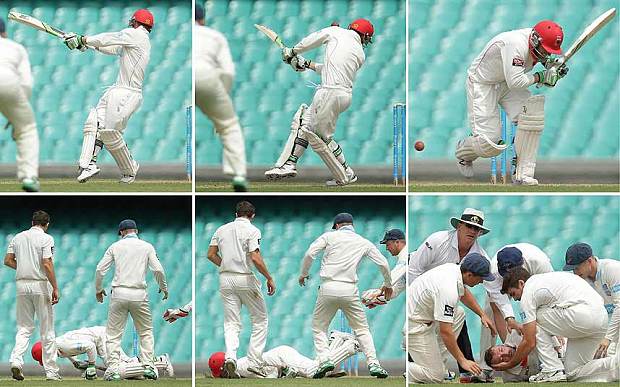
Mark Boucher: South African wicketkeeper Mark Boucher suffered a serious eye injury which ruptured left eyeball when he was struck by a bail standing up to the stumps to legspinner Imran Tahir, which led to his retirement from international cricket.
Mark Boucher lost the lens, iris and pupil in his left eye after a being hit by a bail that flew back off the top of the wicket.
Ahmed shehzad: Pakistani batsman Ahmed Shehzad suffered a minor skull fracture during the Test against New Zealand after being hit by a ball inspite wearing a helmet. Shehzad was hit by a bouncer from Corey Anderson which hit him on skull.
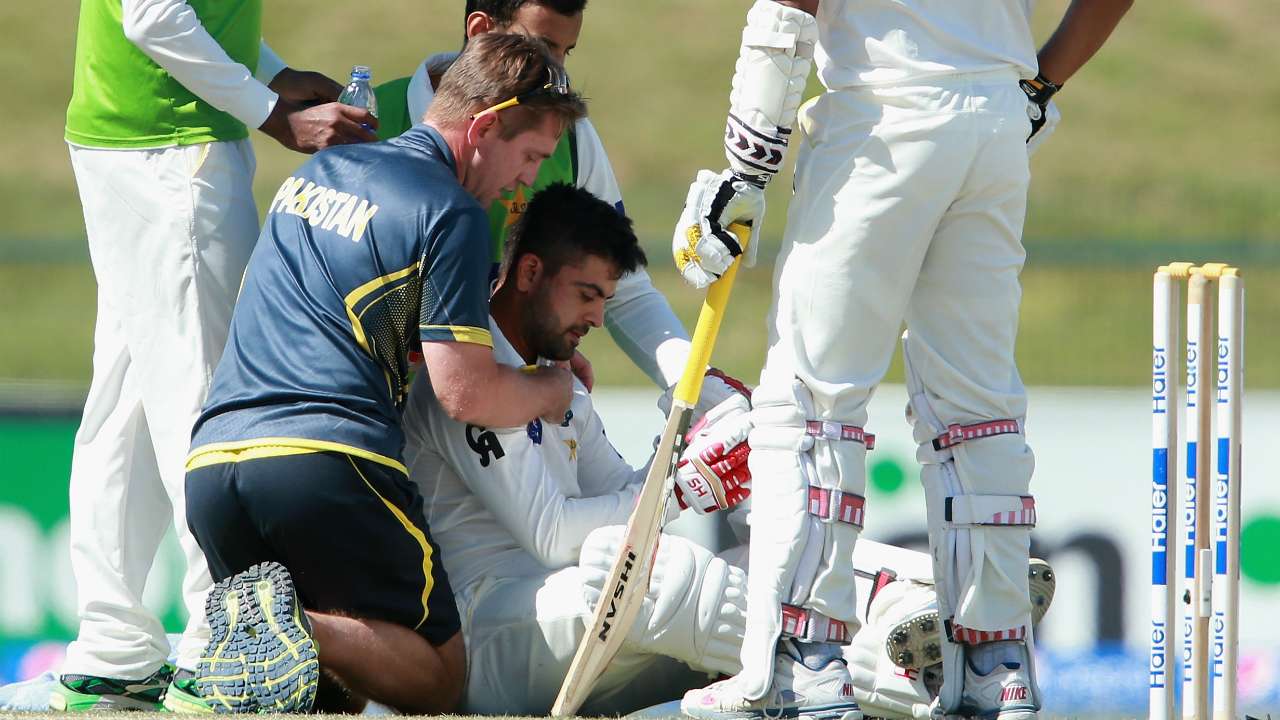
Stuart Broad: England's Stuart Broad suffers nasty injury as he top-edged ball through his helmet during India Test. Stuart Broad suffered a fractured nose and had to under go surgery.
He was struck in the face from a short-pitched delivery from Varun Aaron that managed to smash through his helmet's protective grille.
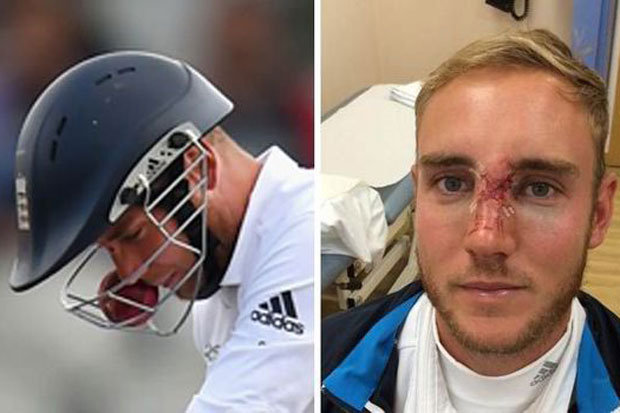
Mike Gatting: Mike Gatting suffered a nasty injury in the first One-Day International. Malcolm Marshall's ball lifted and caught Gatting in an awkward position. Gatting's nose remains the most photographed nose in Britain!
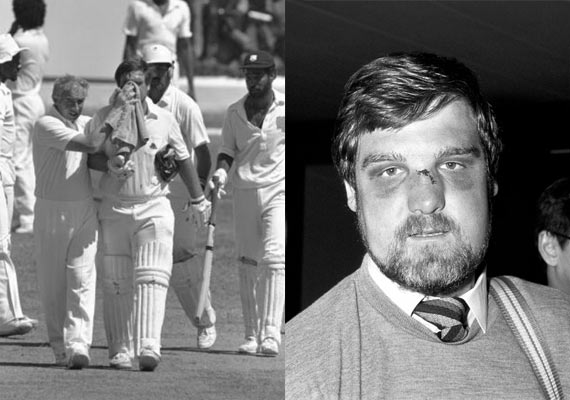
Brendon McCullum: Brett Lee bowled a ferocious bouncer to Brendon McCullum who missed the ball and had to pay the price. There was blood splattered all around as McCullum had to retire hurt.
David Lawrence: While trying to generate more pace collapsed on his bowling through and fractured his left knee cap. Lawrence had to be carried from the field on a stretcher.
The spectators watching the match said the sound of his knee splitting was "like a pistol shot".
Ricky Ponting: Fromer Asutralian captain Isicky Ponting is known for his aggressive batting and attitude on the field. And he's amongst those who played best on hook shots on the field.
In the 2005 Ashes, Steve Harmison beat Ponting for pace as the Australian captain missed the hook shot. The ball thudded on to Ponting's helmet and there was a cut on his face which left hi, bleeding on the ground.
Gary Kirsten: Pakistani fast bowler Shoaib Akhtar is famous for his dangerous Bouncer ball, which had sent back many batsmens back to pavillion. South Africa's batsman Gary Kirsten was another victim of Akhtar who suffered serious injury from his ball.
During a match between Pakistan and South Africa, Gary attempted to hook Shoaib Akhtar but missed it. The ball smashed Kirsten's cheek.
Brian Lara: Brian Lara, a cricketing legend has also tasted how does it feel after being hit by a bouncer. In the 2004 Champions Trophy semifinal, Pakistan fast bowler Shoaib Akhtar's bouncer felled Brian Lara. Lara suffered serious injuries.
Raman Lamba: India's Raman Lamba suffered a dreadful injury on the field. He died in 1998 after being struck in the temple by a cricket ball hit by a Bangladesh batsman.
He died after slipping into coma due to internal hemorrhage, three days after suffering the injury by a cricket ball while fielding in Bangladesh's league cricket.
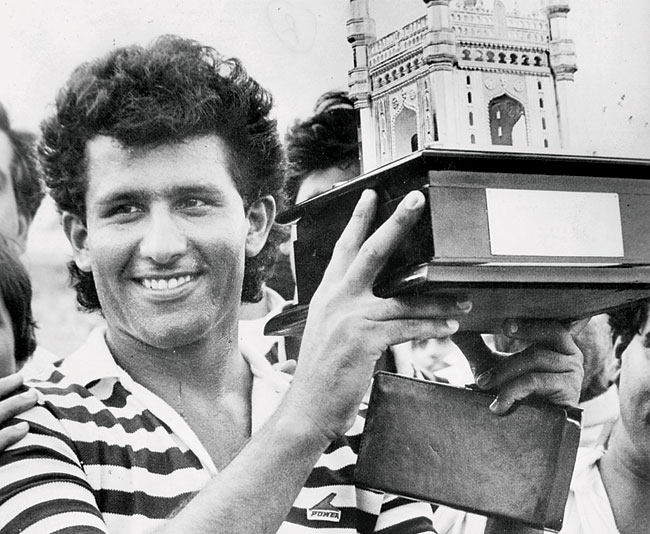
Abdul Aziz: Pakistan's Abdul Aziz was struck on the chest by a ball, collapsed and never regained consciousness. He died on the way to the hospital, aged 17.
In some scorecards, Aziz is recorded as "absent dead"
Aziz's death was the third instance of the death of a cricketer during a first-class cricket match, succeeding those of Maurice Nichol and Charlie Bull in the thirties.
Nari Contractor: Indian captain Nari Contractor was hit in the head by a ball from West Indian paceman Charlie Griffith.
Contractor was unconscious for six days and needed a blood transfusion to survive but never played international cricket again.
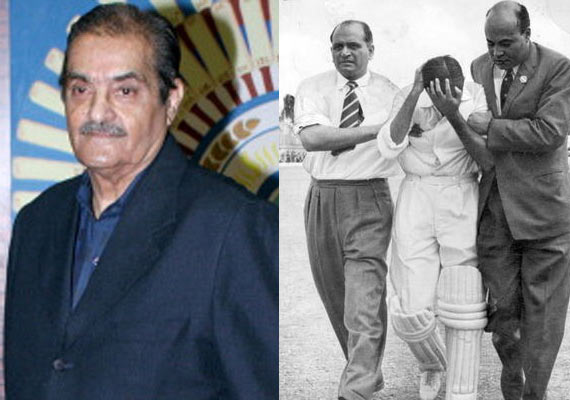
Despite the improvements in protective wear, however, the risk to batsmen as well as bowler remains. Sports authorities might have introduced high class protective gears but to avoid such injuries, its 'skill' that matters. Batsman like Sir Viv Rechards and Clive Loyd can set the perfect example to play the bouncer 'skillfully'.



















